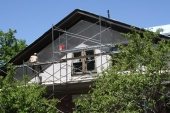
 3
3




 1
1




 1
1




 2
2




 2
2




 2
2




 1
1




 1
1








I think having land and not ruining it is the most beautiful art that anybody could ever want to own. - warhol




 1
1




 1
1




 1
1




 1
1

















|
he who throws mud loses ground -- this tiny ad is sitting on a lot of mud:
The new purple deck of permaculture playing cards
https://www.kickstarter.com/projects/paulwheaton/garden-cards
|








